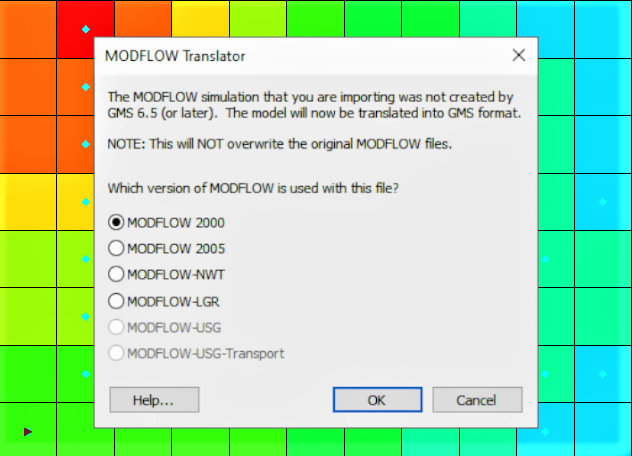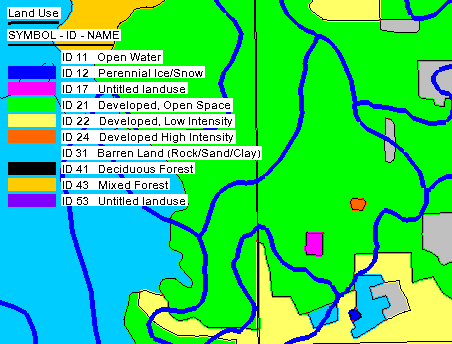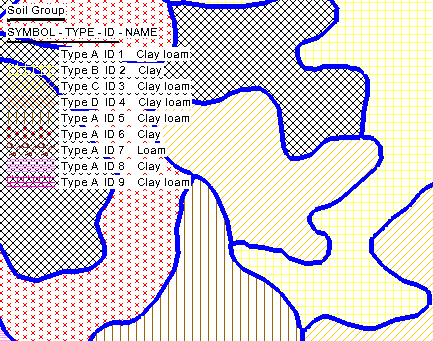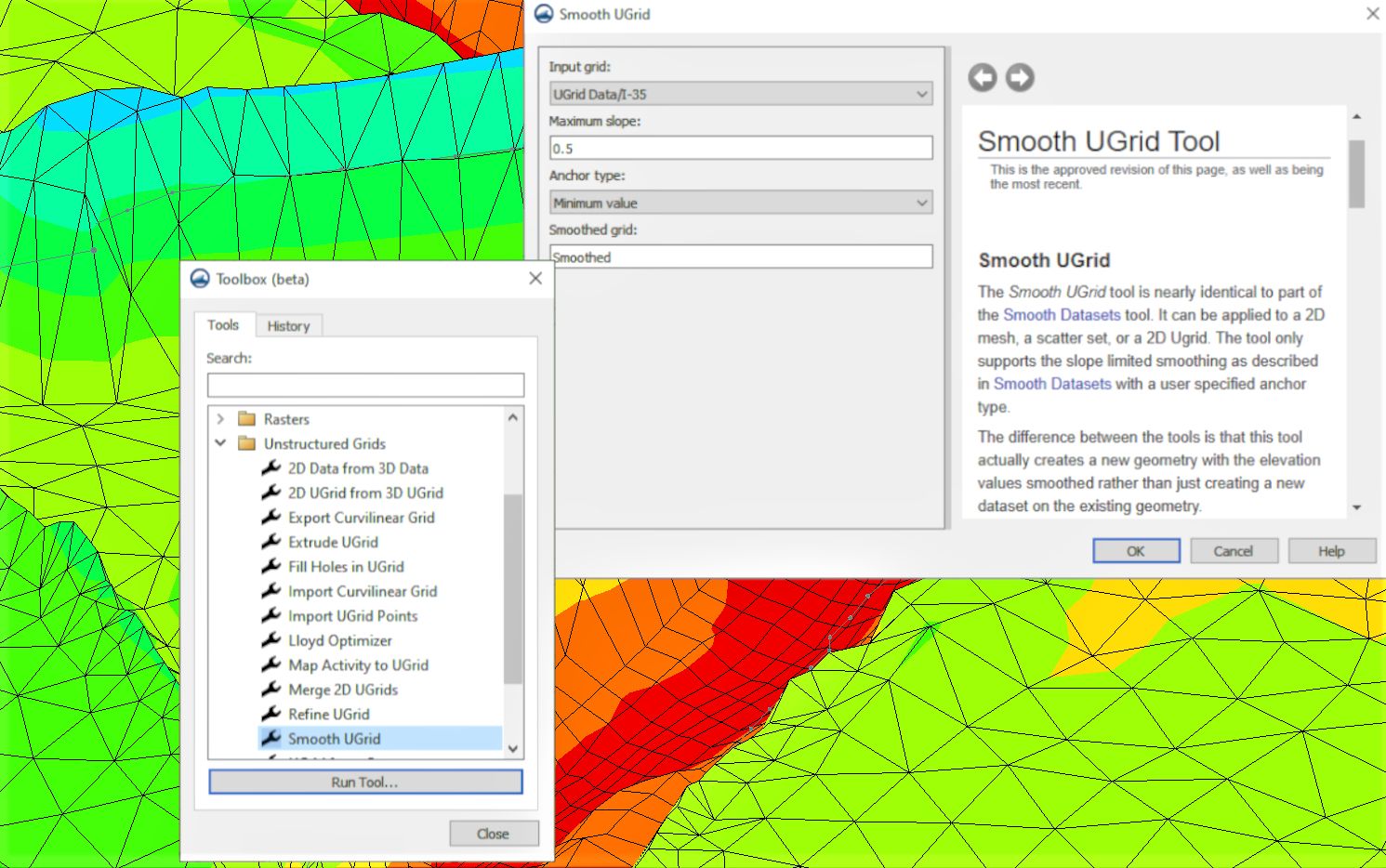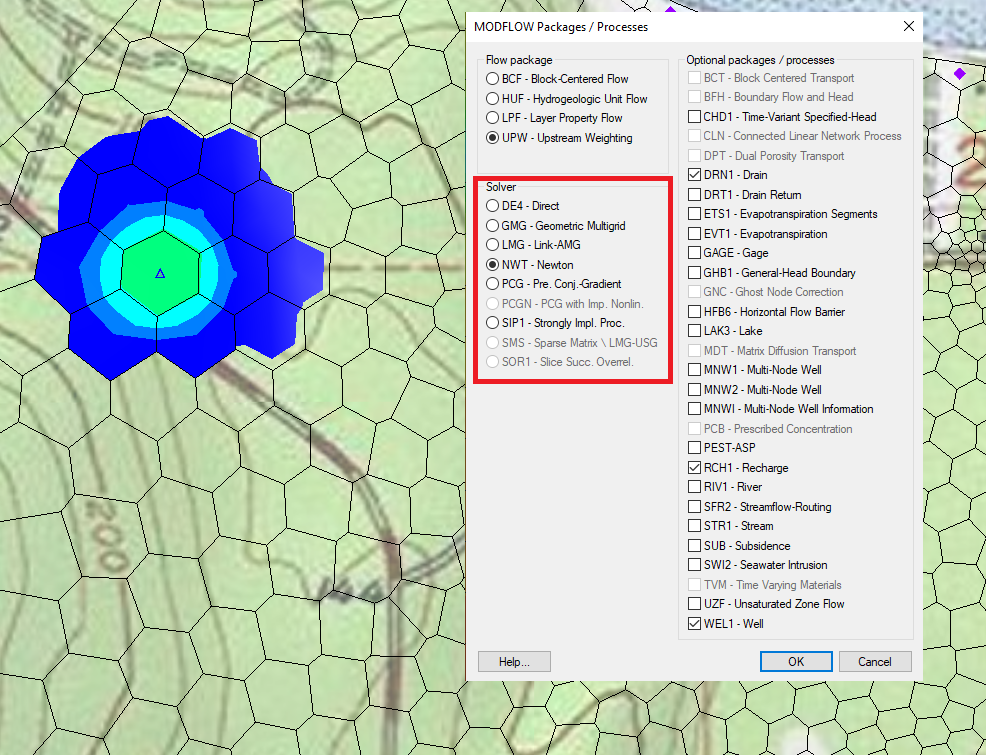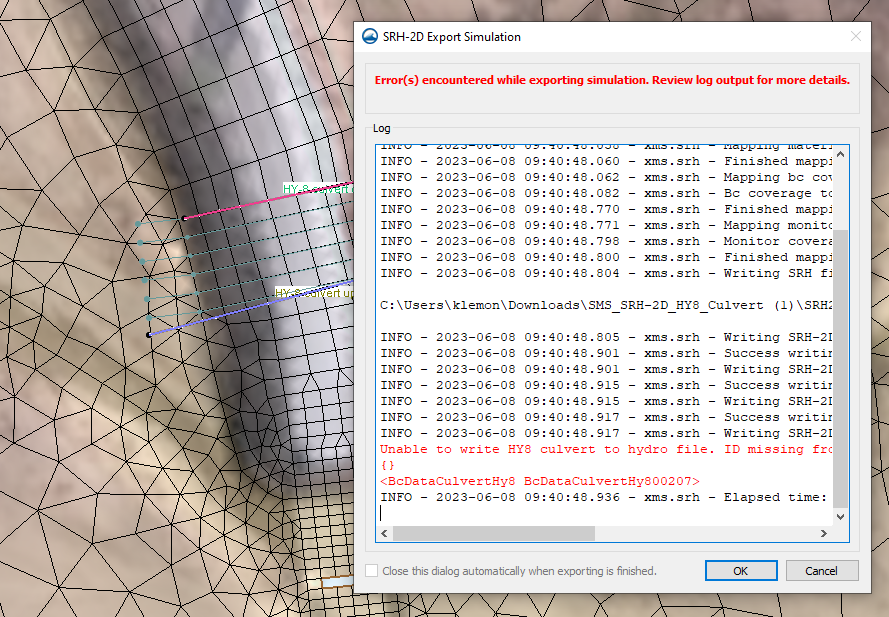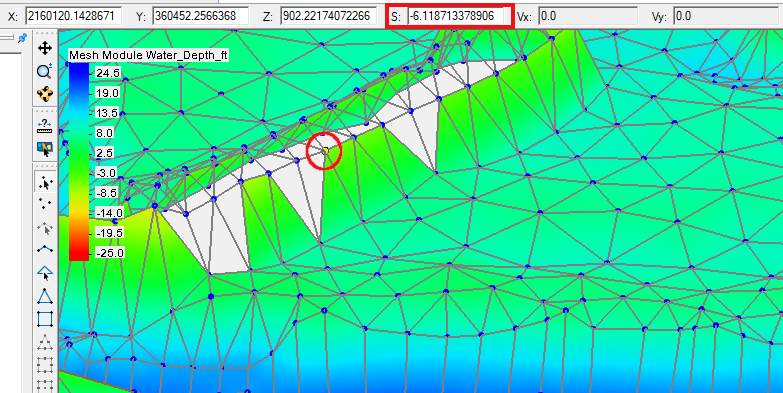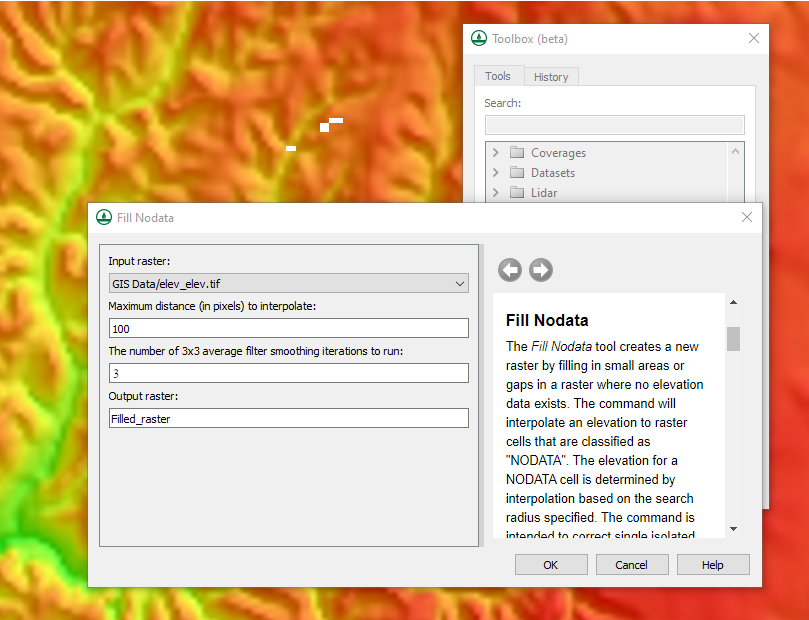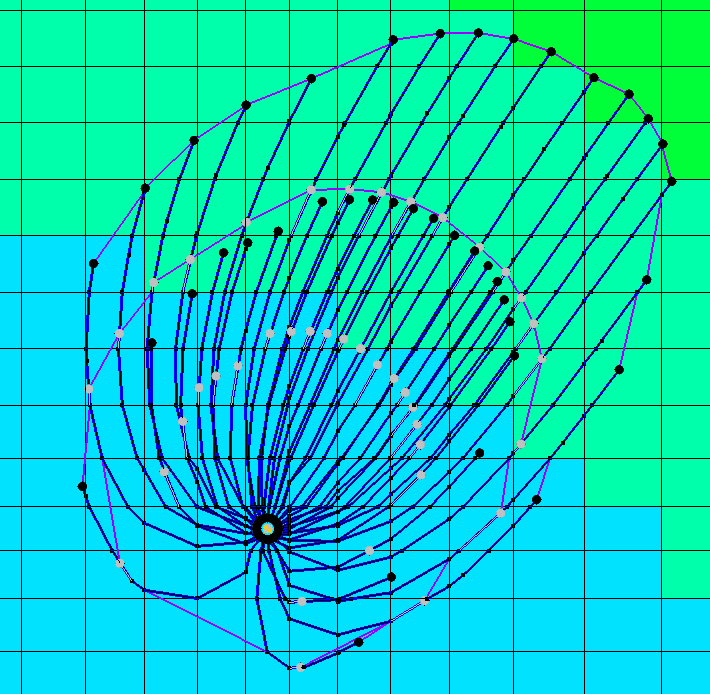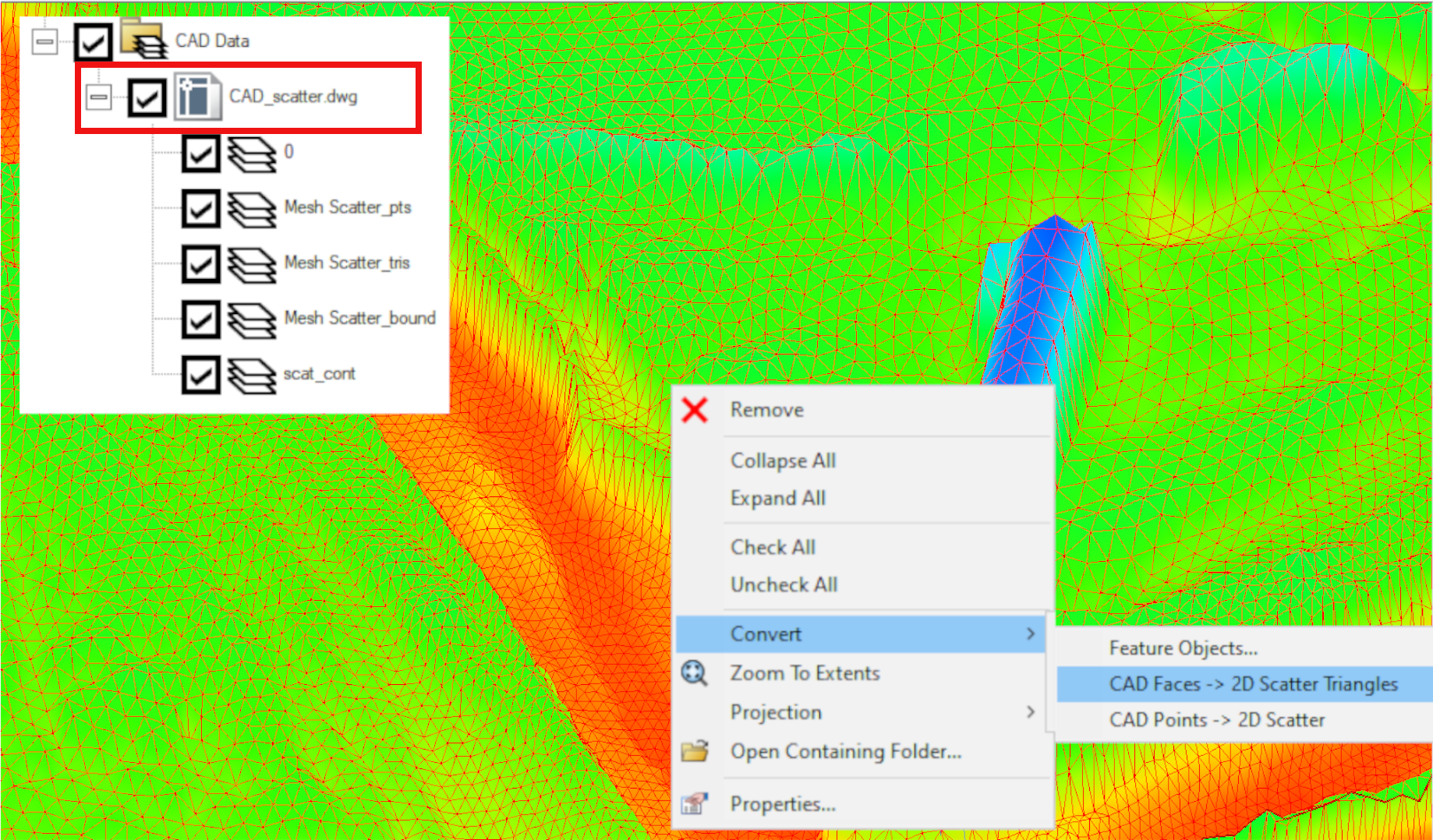New Unstructured Grid Generation Tools in SMS 13.3
By aquaveo on July 17, 2023The Surface-water Modeling System (SMS) allows use of unstructured grid (UGrid) geometries with multiple numeric models. With that, we have been adding functionality to make generating UGrids easier and more convenient. The toolbox in SMS offers many tools to help speed up UGrid creation and simplify the process. SMS 13.3 beta offers the same tools as before, as well as some new ones. As of now there are fifteen tools under the Unstructured Grids folder in the toolbox. The tool types cover conversion from different types of data to a UGrid, import and export tools, and more. This blog post will explore just two of the many different options in the toolbox.
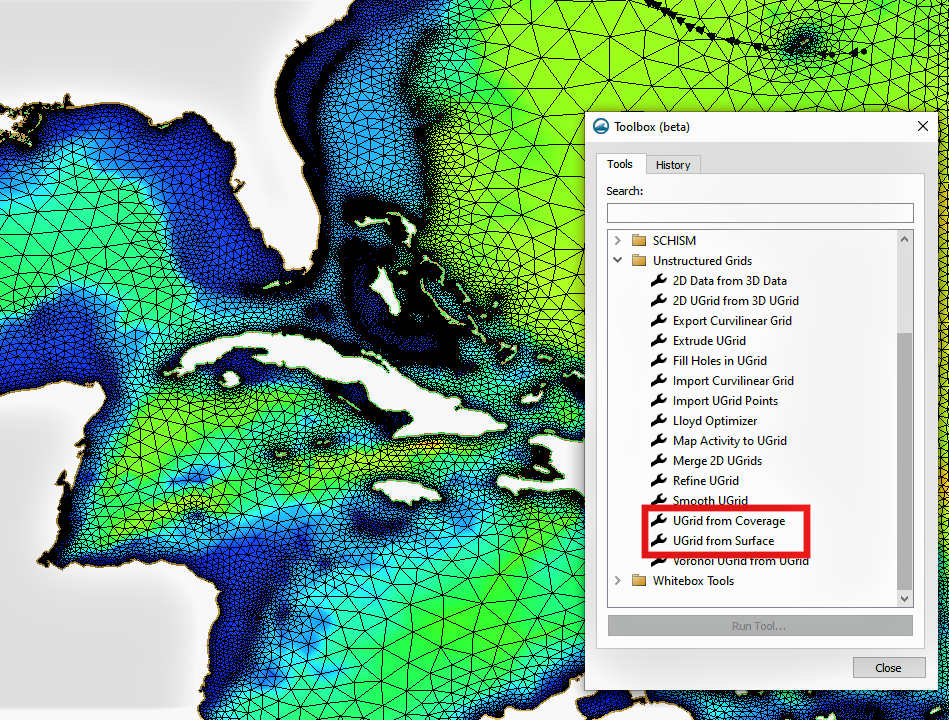
The first UGrid creation tool we will explore in this blog post is the UGrid from Coverage tool. The UGrid from Coverage tool takes the feature objects on a selected coverage and generates a UGrid from the properties of those feature objects. The tool can work with multiple coverage types. Like using the mesh generator coverage to create 2D meshes, the spacing of vertices on the arcs will determine the refinement of the generated UGrid. To generate a UGrid, the coverage must have at least one polygon in it. The parameters required when executing the tool are a coverage, and a name for the new UGrid. We recommend choosing a name that is short, but references the input data for easy reference.
The second UGrid tool we will explore is the UGrid from Surface tool. The UGrid from Surface tool takes an existing mesh, scatter set, or Cartesian grid and creates a new UGrid with copies of all of the datasets. This can be useful because it changes the data into a form that can be modified and manipulated while still preserving the original data. The input parameters include an input mesh, scatter set, or Cartesian grid, and an output grid name. Again, we recommend choosing a name that is short and references the input data.
All of the UGrid tools are accessible by clicking on the toolbox macro at the top of the window, then expanding the Unstructured Grids folder.
Download the SMS 13.3 beta and explore how the UGrid from Coverage and UGrid from surface tools, as well as the numerous other UGrid tools, can help your project today!
